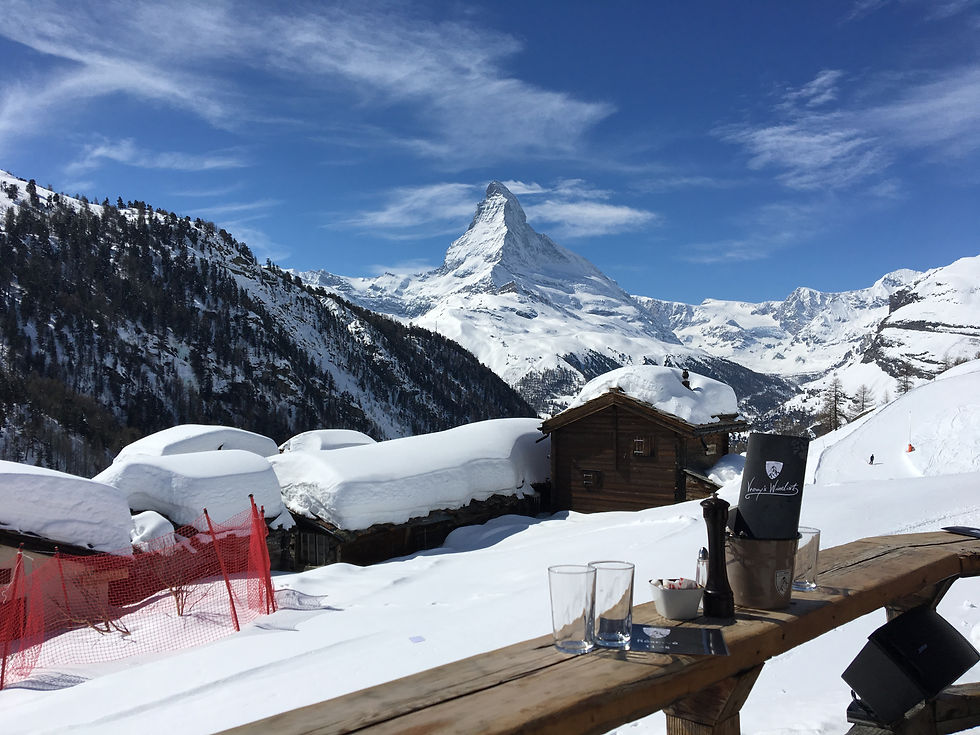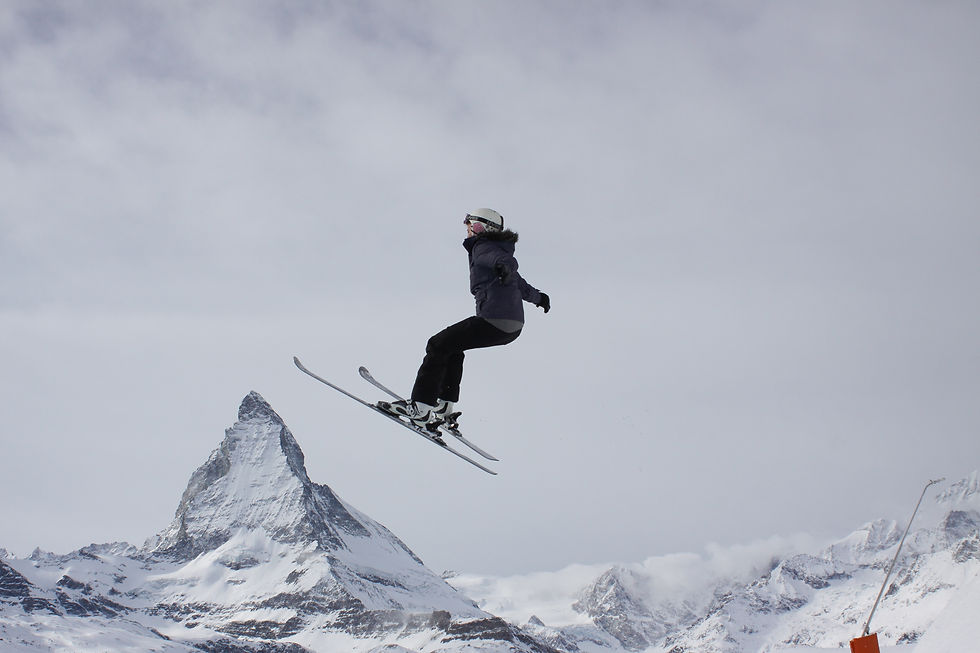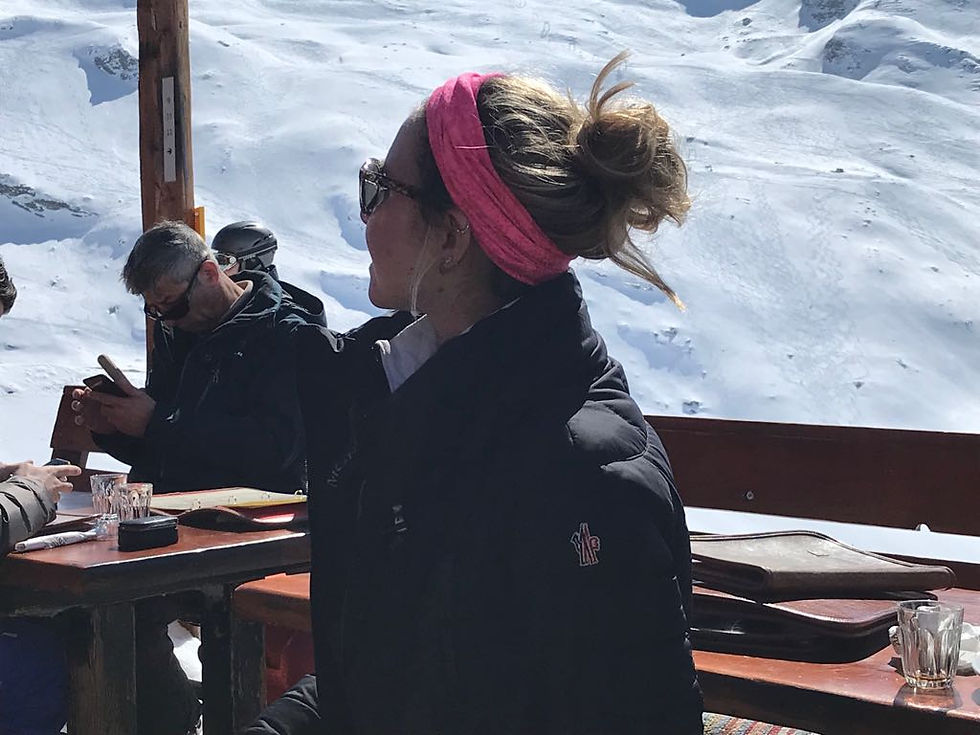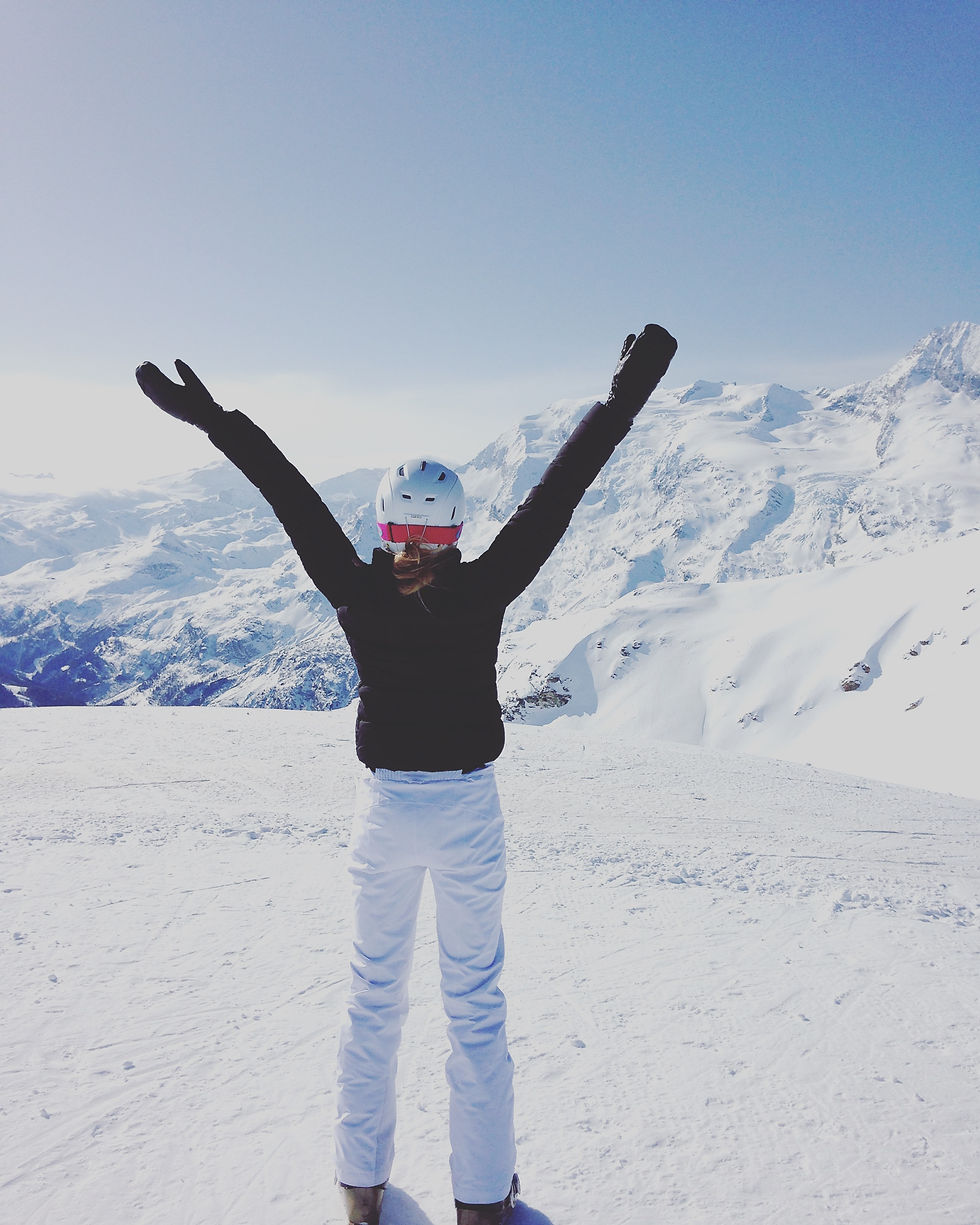So you want to go Skiing?
- Carys Reid-Davies
- Oct 8, 2019
- 6 min read
Skiing is a real once in a lifetime experience. Swiftly speeding down the slopes is a feeling like no other, as white mountain peaks stretch up to the sun and trees litter the run. You get the same buzz you feel when on a rollercoaster, only it's better and more real. However, it's not the easiest sport to pick up, and if you're going for the first time there are a few things that are important to know.
When to go?
Skiing is weather dependent seeing as snow is a pretty crucial factor. Generally speaking, you can ski anytime from November until April in most European resorts. However, with climate change engulfing the world in heat, the window for skiing is constantly decreasing. As a rule, we used to go in February half term as there was nearly always good snow at this time and, of course, we were on school holidays. However, my family did once take a risk and go during the Easter holidays and the snow, whilst it was starting to melt, was still pretty good. I also went to Zermatt for a few days in January once, and the snow was definitely the best I'd experienced but it was colder. So, to break it down:
November, end of March, April: Riskier time to go but warmer weather.
December, January: Greater guarantee of good snow but colder.
February, early March: Likely to have good snow and nice weather but it may be more crowded.

Where to go?
There are thousands of resorts so you can literally go anywhere, from France or Italy to Canada or Japan. The one thing to bear in mind is that skiing is expensive regardless so it's probably better to stay closer to home as longer flights mean greater expense, especially if it's your first time as you may not be able to get around as much of the piste as you'd like.
All resorts are different. For example Sainte Foy in France is fairly small and ideal for beginners, where as the three valleys is the largest resort in the world (here you'll find 600km of skiable snow but this can be quite overwhelming)! There are also resorts, such as Val Thorens, that are notorious for drinking (skiers call drinking on the slope après ski). These attract a lot of University ski trips and the pistes can get crowded with tipsy teens so that's another factor to consider.

Where to stay?
Once you've decided when to go and picked your resort, you need to think about where to stay. With skiing there's two main options for accommodation. Ski chalets or hotels. Both have their pros and cons. Ski chalets are especially good for a big group and if you go for a catered chalet it means that breakfast will be prepared in the mornings and you don't have to think about cooking after a long day on the slopes. There's also something lovely about coming home to a warm chalet and having lots of space to stretch out. However, they are expensive (you can save if you go self catered though)!
Hotels, on the other hand, are usually cheaper but you don't have the same amount of space. This means that if there's a big group of you it can be hard to find a communal area to socialise.
The best piece of advice I could give any aspiring skiers, though, is to go for a hotel or chalet that is ski in ski out. This means you don't have to faff around with getting a bus or finding a parking space at the resort. It also means you're likely to avoid the inevitable morning queues. There really is no substitute for being able to ski right to your door.

How do the slopes work?
There is a colour system for the slopes when skiing. In Europe, beginner slopes are green and blue (blue is slightly harder than green). Both of these are good for people who are just starting out as they are very gentle. Intermediate slopes are red and these are significantly steeper, whilst the black slopes are expert, and thus the hardest to navigate. Outside of Europe the colour system is slightly different so look it up if you're going to North America or Japan, but generally speaking green is easy and black is difficult.
Now getting down the slope is one thing, getting up it is another. If you've never been on a chairlift it can be quite daunting so start out by using pommel lifts. These are long metal poles which hang down and have a seat that you can position in between your legs. If you fall of it doesn't matter as you can just go to the side, get up, and ski back down to the bottom. Chair lifts, on the other hand, require going through barriers and sitting down once it has approached. You then secure yourself in until the end, when you lift up the barrier and have to ski off promptly. This is where skis are easier that snowboards. There are also bubble lifts where you take your skis off and put them in the side of the lift while you sit on the inside. You'll get used to each of these in no time though.
The one thing you do need to have with you at all times is your ski pass as this is what allows you to get on each lift. Usually, ski jackets have a pocket on the outside of the sleeve so you can slide yours into it. This way, you just have to put your arm to each barrier and you'll be in.
Each resort will open and close at different times and some chairlifts close earlier than others. It's important to check this if you are in a ski in ski out as you could end up not being able to get back to your chalet or hotel! Most lifts will open around 8AM and close at 4:30PM so be prepared for some early mornings if you want to make the most of it!
How to be safe?
Skiing is a fun activity but it can be dangerous. It's like driving a car in a way because you don't just have to be mindful of yourself, you have to be aware of everyone else around you. If you've never skied before I'd recommend going to a ski centre and having a few lessons before hitting the slopes. This is beneficial for two reasons. Firstly, you'll be able to get more out of the holiday if you already know the basics and secondly, because you'll be far less likely to have an accident.
It could also be worth having lessons when on the actual holiday itself. A lot of classes take place for a few hours in the morning so you still have the whole afternoon to ski. This works really well as you'll have a teacher to show you a lot of the best slopes in the resort and you have the reassurance that you're in safe hands the whole time.

What do you need?
Having the right skiing kit is essential. There is nothing worse than being up a mountain when you are freezing cold. So what do you need? You can either opt for a ski jacket and salopettes, or an all in one ski suit. Either way, it's worth forking out a little extra in order to get some good quality gear that is guaranteed to keep you cosy. You'll need thermals for underneath and take some jumpers too, as cold days may require a thermal and jumper underneath your coat.
If you're like me and really struggle in the cold, then gloves and ski socks will be extremely important. I prefer actual gloves as opposed to mittens, but ones lined with fur are especially good. You can get thermal liners to put on under your gloves and we also take heat warmers. As for ski socks, I have heated ones whilst my mum has normal socks but heated boots. Heated socks are cheaper and I don't have my own boots to heat, but if you're serious about skiing then heated boots may prove better in the long run.
Now all you need is a good hat and goggles. You'll also want sun glasses for days where it's not too cold and for when you're having a break. The weather can be stunning when skiing and you may be surprised at how warm you get! Plus, the sun is seriously strong so take plenty sun cream, moisturiser, and lip balm.
Snow + rock is a good place to go for the main ski gear but you can definitely save on thermals by going to TK Maxx!
As for the skis, boots, and poles, you'll be able to hire them out. You can actually hire a helmet too if you'd rather not buy one. Just look up ski hire at the resort you've chosen. After you've got all that you'll just need to look into ski passes which again can be done by looking up your resort (just be warned, the passes can be pretty hefty in price)!

Ski or Snowboard?
Both skiing and snowboarding are great fun so the choice really is entirely yours. I have always skied so that is what I am most comfortable with. I also feel like there's more flexibility with skiing as both your legs are free as opposed to being fixed onto one board. However, a lot of people find snowboarding easier to pick up and many people think it looks much cooler than skiing. If you've done neither, I'd suggest trying out both and seeing which comes most naturally to you.










Comentarios